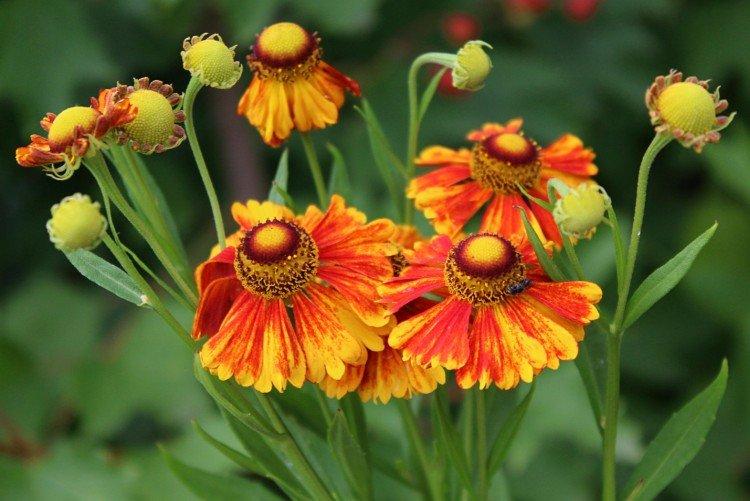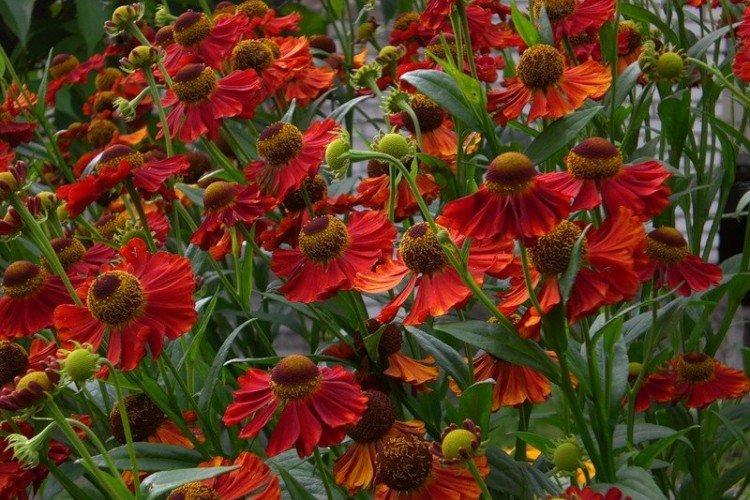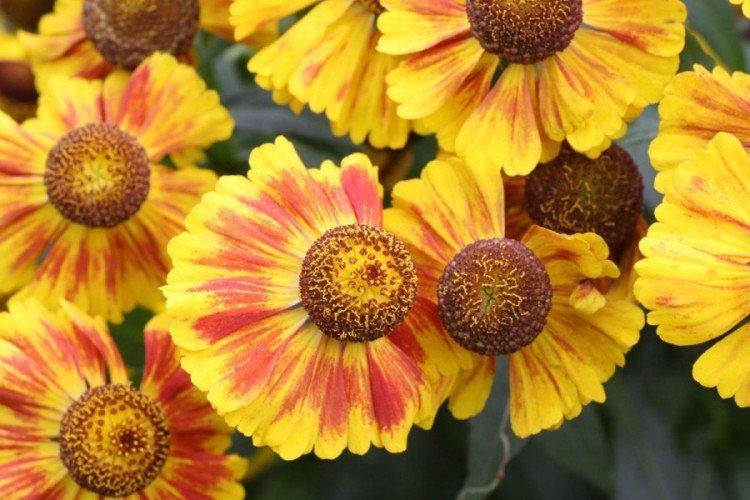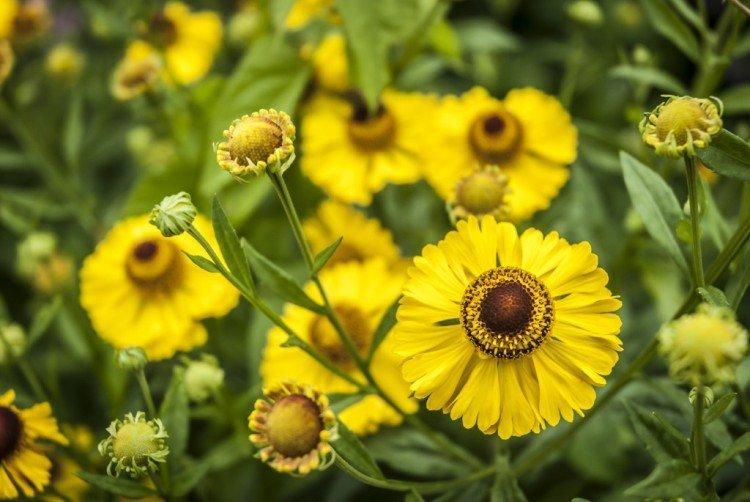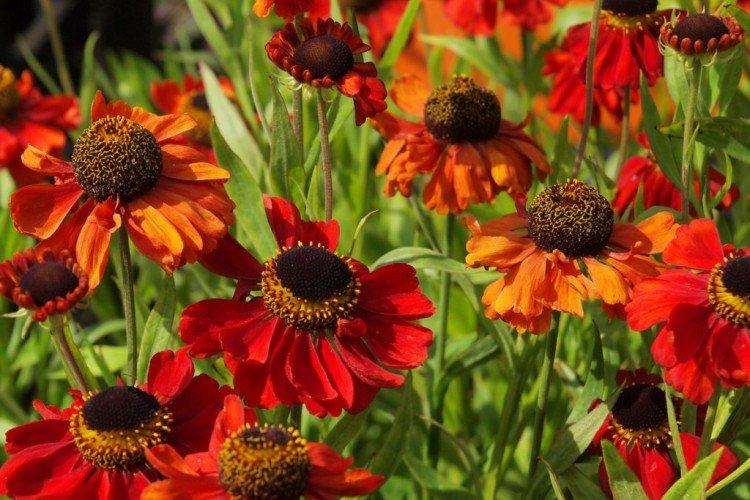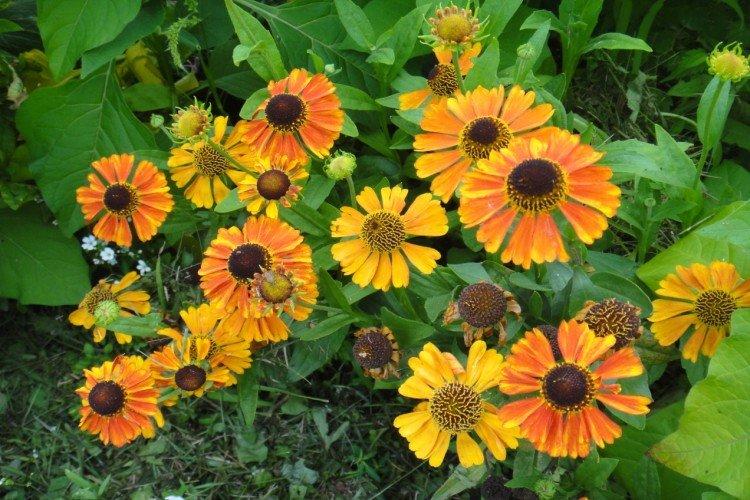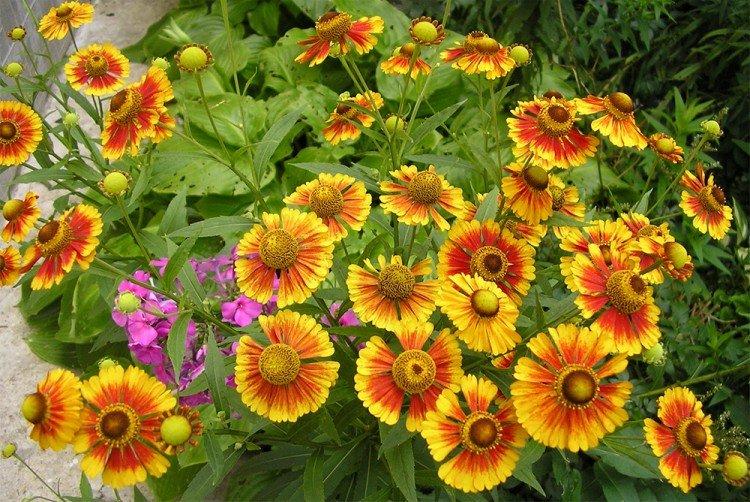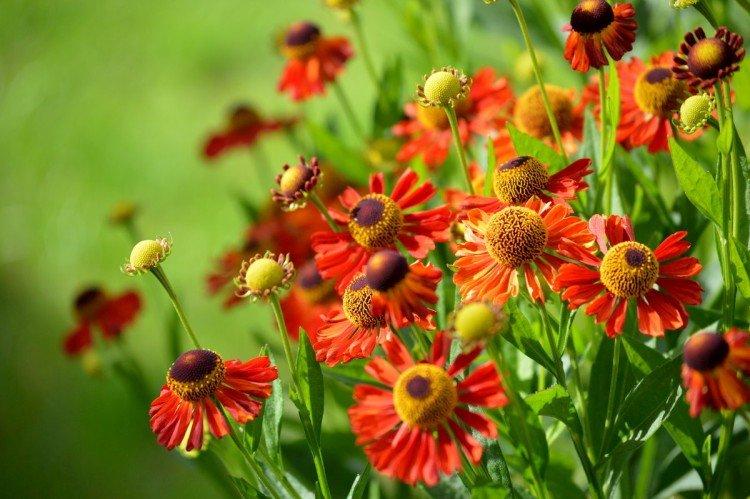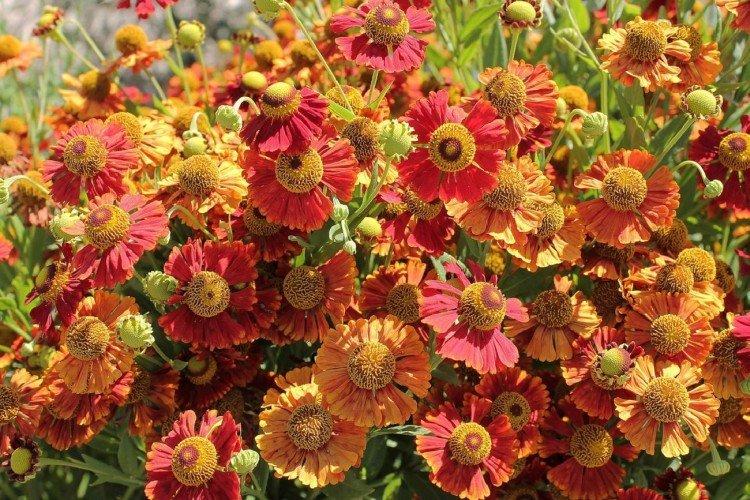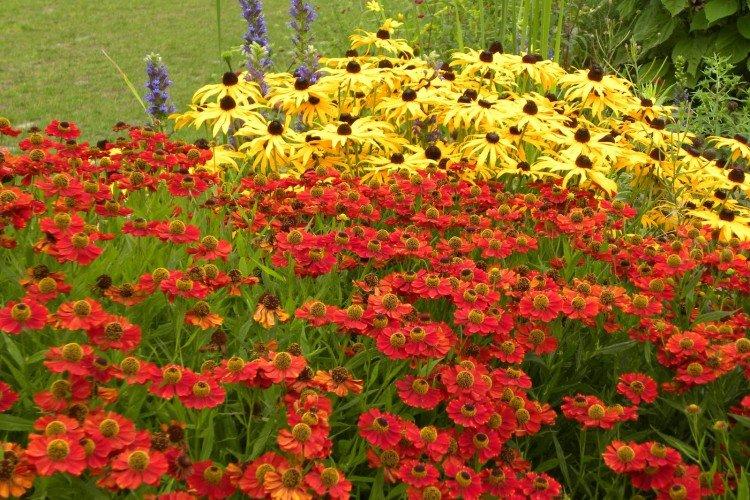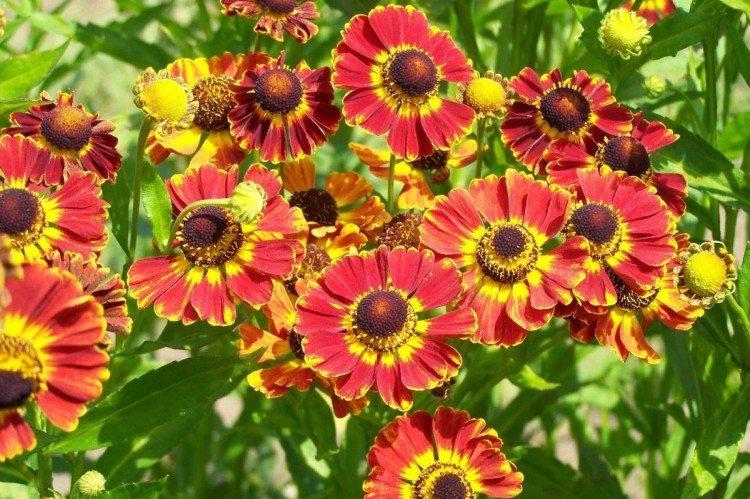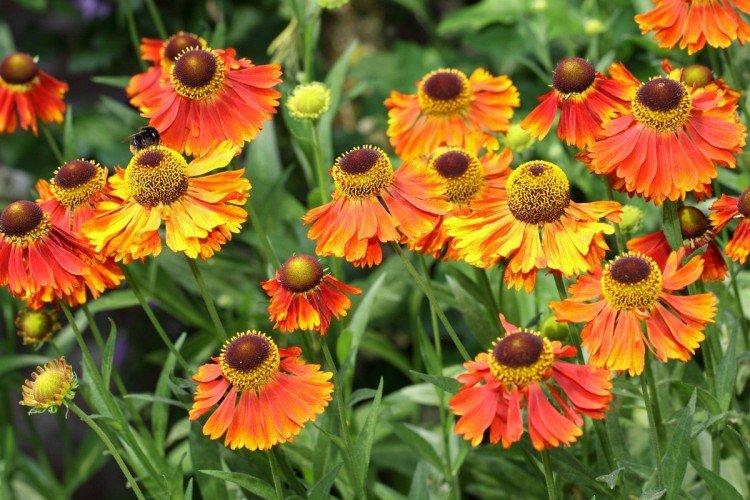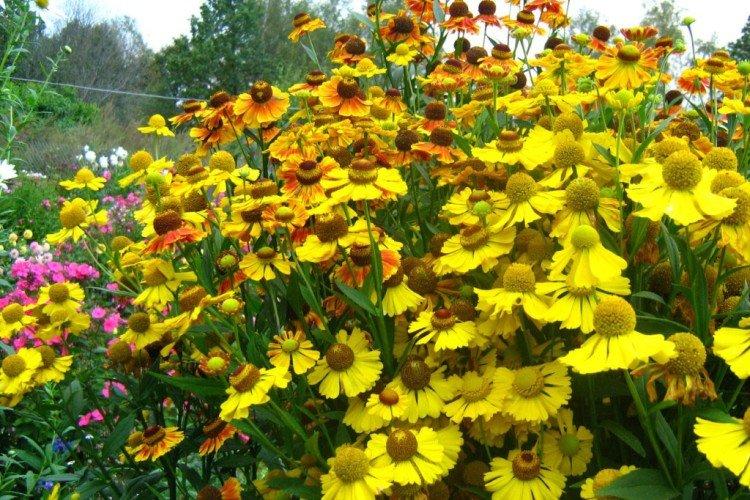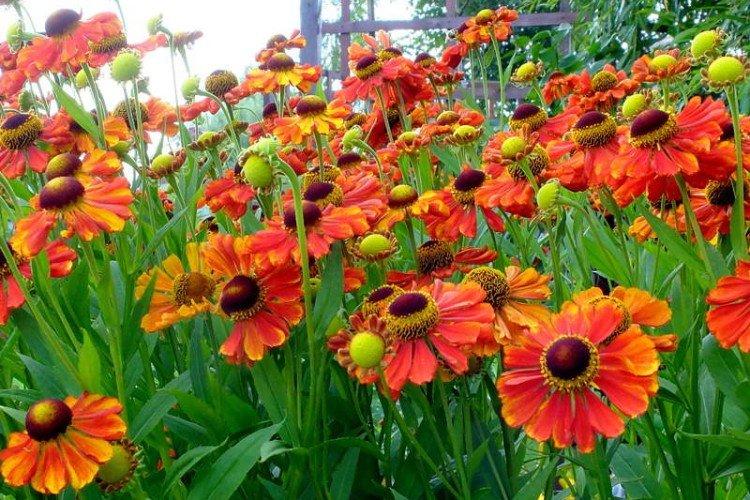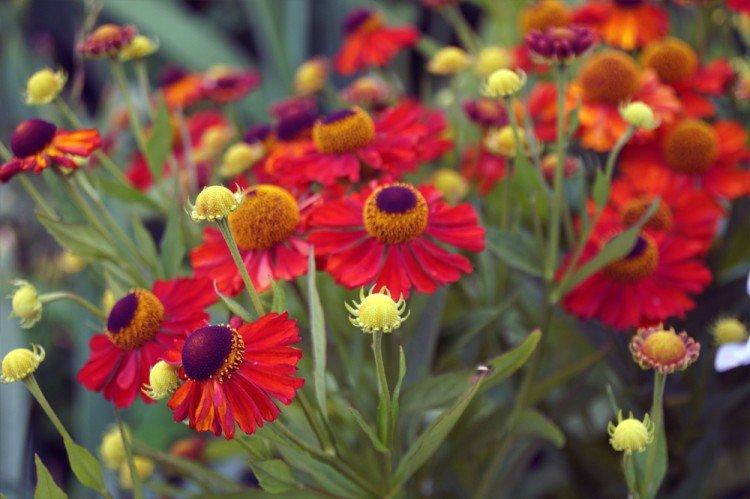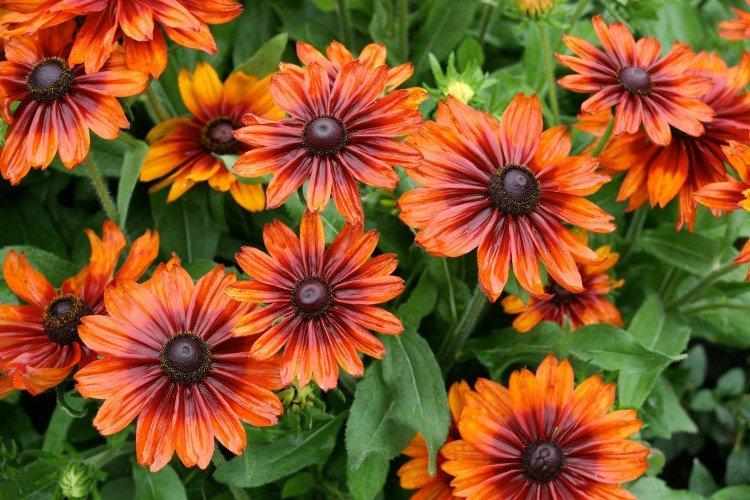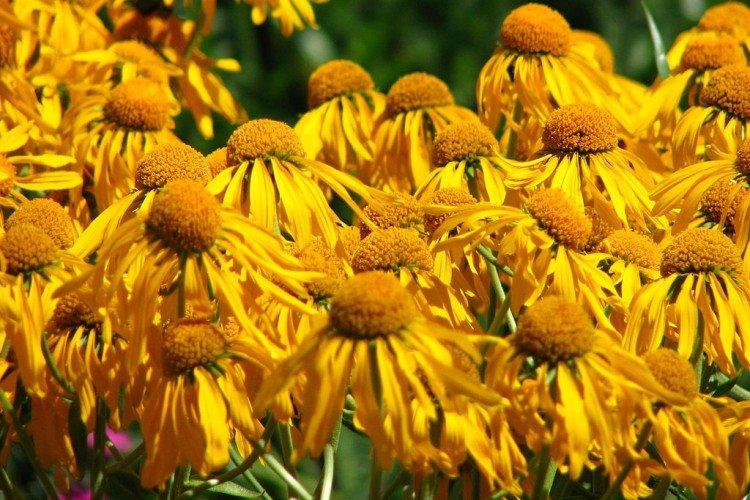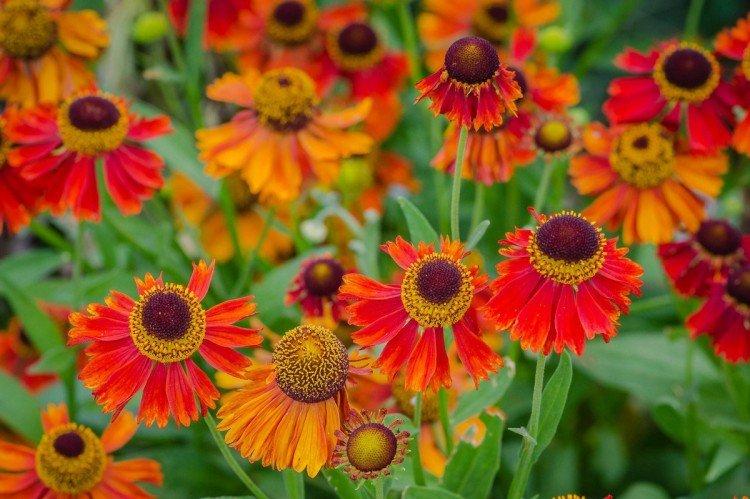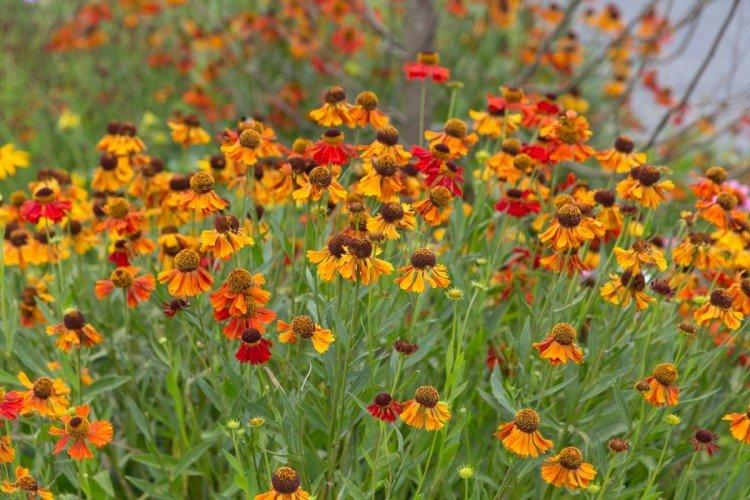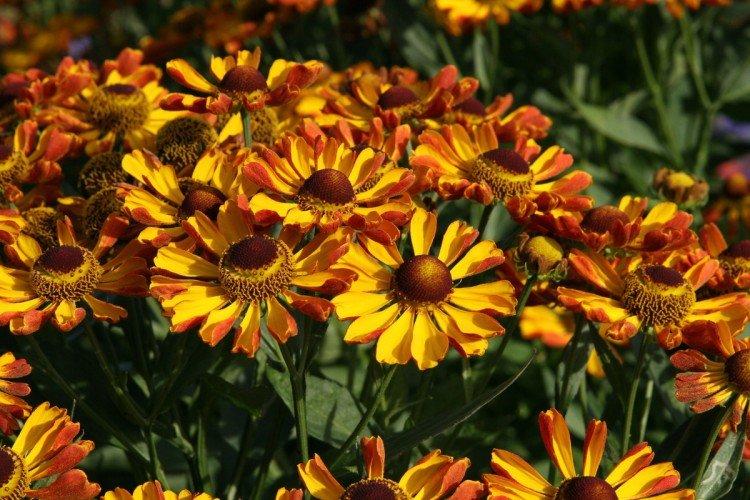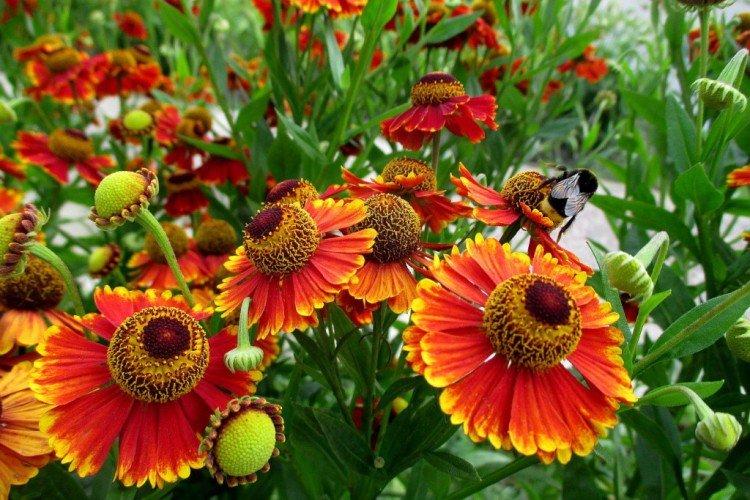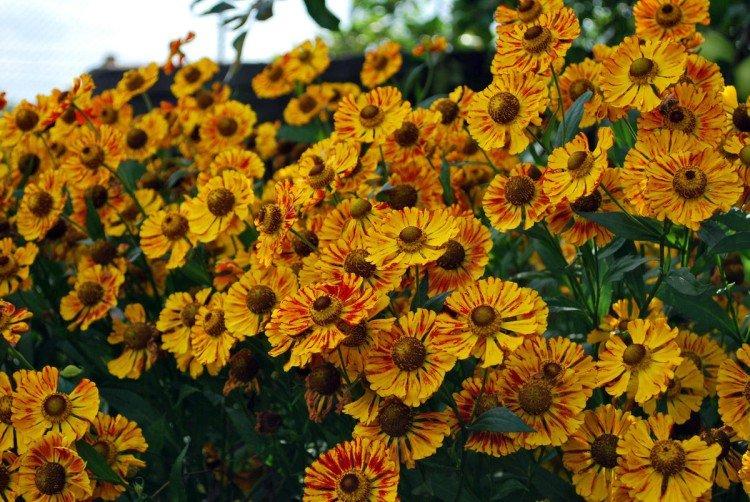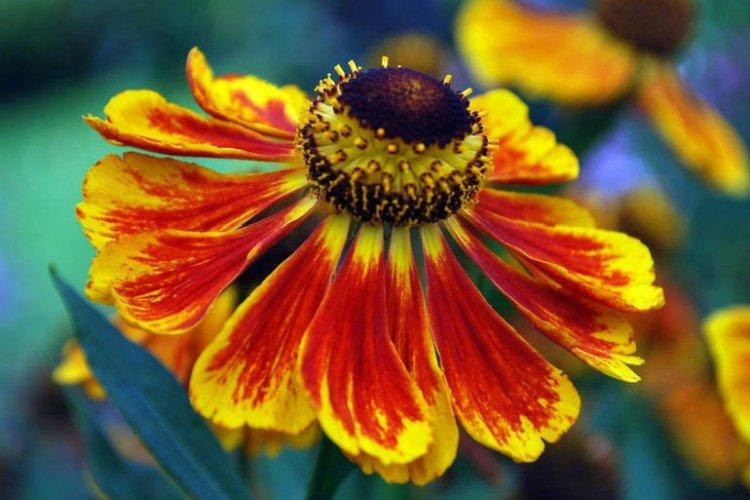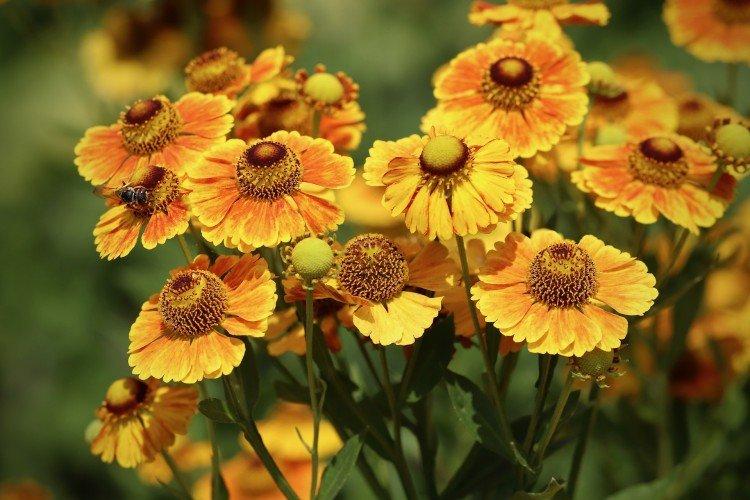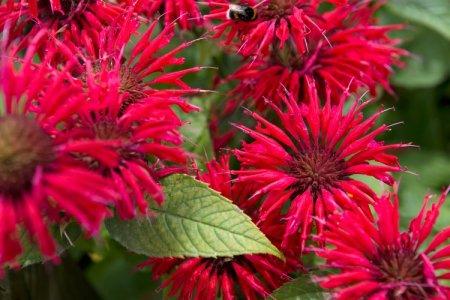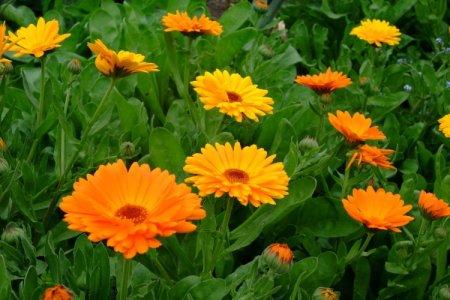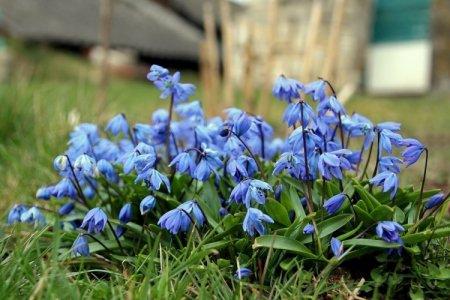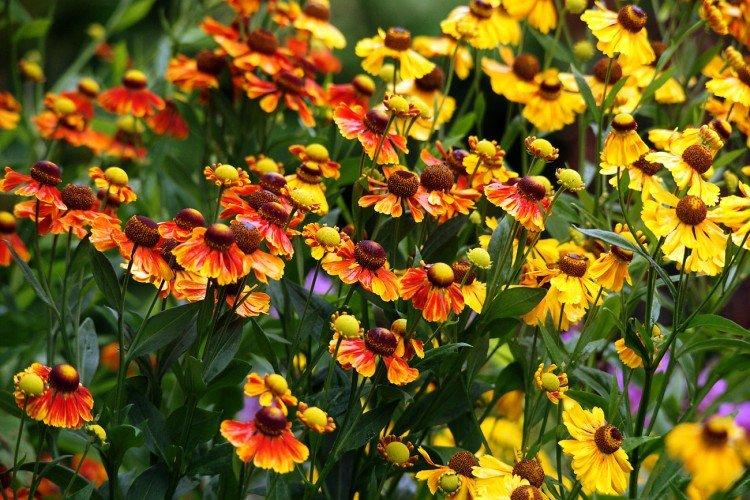
Gardeners have long fallen in love with Gelenium for its extraordinary beauty. Typical chamomile flowers are colored in all shades of yellow, red, orange and brown. So if you have long wanted to fill the area with solar heat - this is exactly your option!
general information
Gelenium is a classic representative of the Astrovian. In nature, he lives in different regions of America, and especially in the United States. According to legend, the spectacular flower received its name in honor of the beautiful Elena, the very one who was the cause of the Trojan War.
The beauty of gelenium is only emphasized by the fact that it blooms late, when almost everyone has already finished blooming. So if you need the perfect autumn version - here it is, at your disposal!
A dense helenium bush is a single plant that just grows in groups. The height of the peduncles reaches 1.5 m, and the buds are single or in corymbose inflorescences. Interestingly, in the fall, the root system of the helenium dies, but the underground buds form new roots and a rosette.
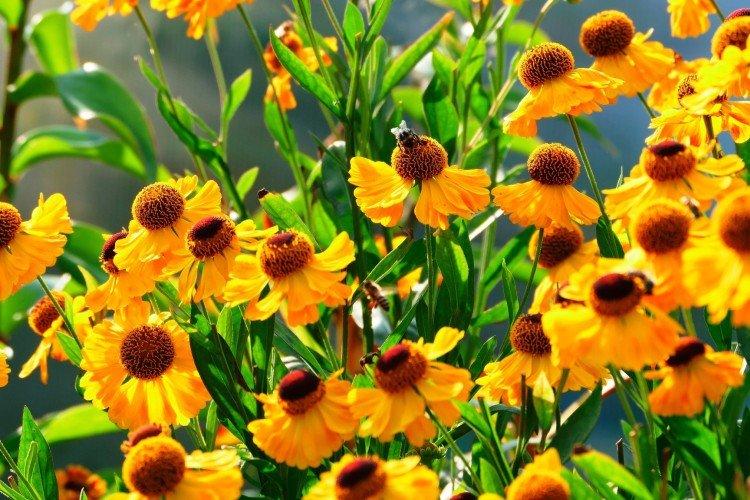
Types of helenium
The genus of helenium includes about 40 different varieties, but first we will analyze the most interesting of them. These species are especially valuable for gardeners!
Autumn helenium
A large perennial with straight and not too branched shoots stretches up to 1.3 m. The stem and leaves are slightly pubescent, and large variegated flowers bloom on thin peduncles.
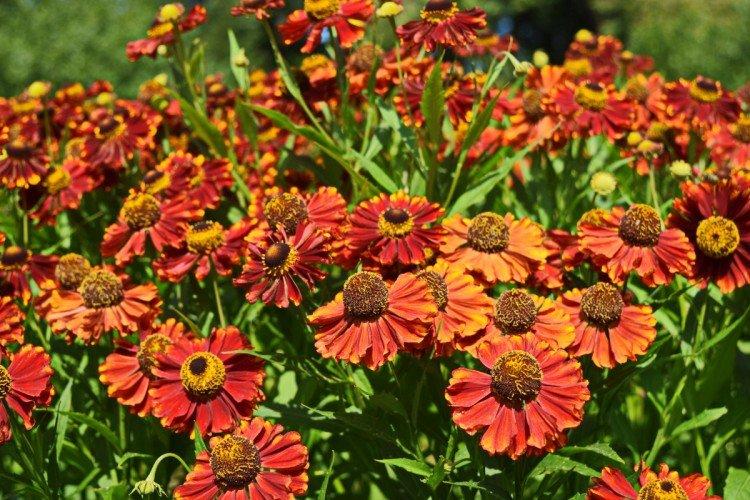
Gelenium Bigelow
Unusual species with lanceolate leaves and yellow-brown inflorescences of 5-6 cm. The height of straight shoots reaches 80 cm, so this is a medium-sized variety.
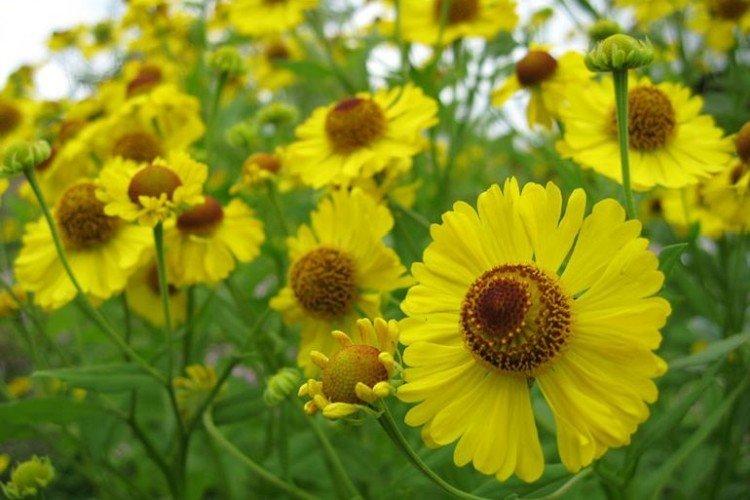
Spring helenium
It is distinguished by early flowering and yellowish color of inflorescences with a diameter of up to 7 cm.The height of the shoots reaches an average of 1 m.
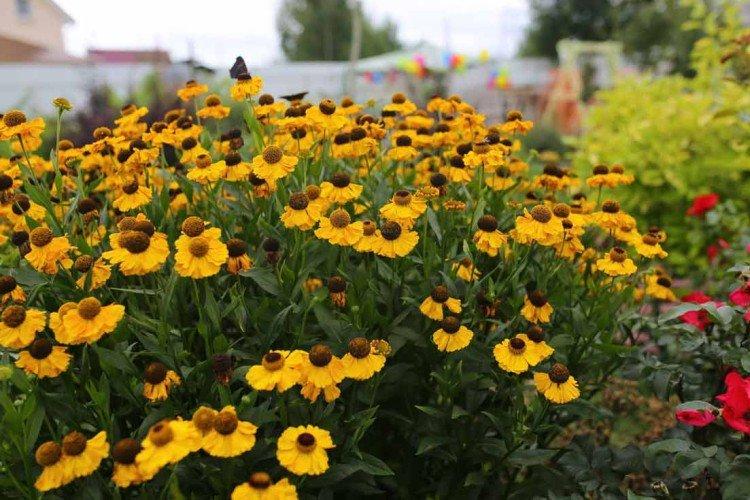
Hybrid helenium
An extensive group of ornamental varieties, most of which begin to bloom in July. Red, brown and brown subspecies are very popular.
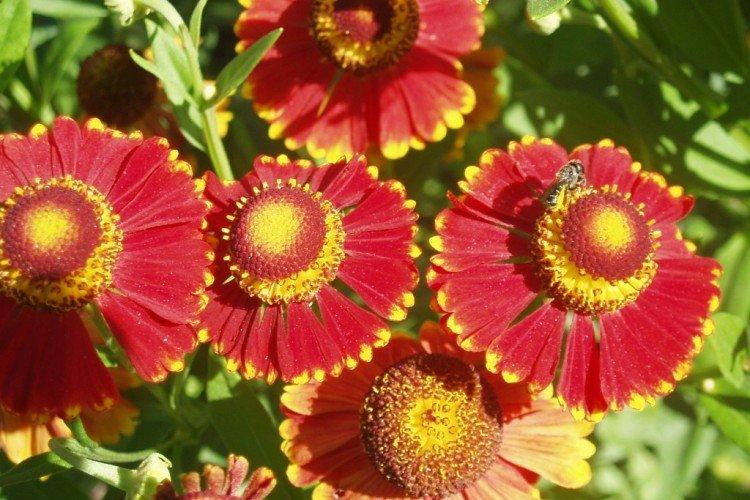
Gelenium Chupa
Or Gelenium Gupesa. It has bright straight shoots that branch upwards, dense elongated leaves with a bluish tint and large single golden flowers up to 9 cm in diameter.

Helenium care
The main rule for caring for helenium is regular and abundant watering. Also, the plant loves feeding, but otherwise does not cause trouble.
Temperature and lighting
It is not for nothing that Gelenium is called a sunny flower, because it really loves bright light and warmth. Partial shade is also suitable for some varieties, but it should not be very intense.
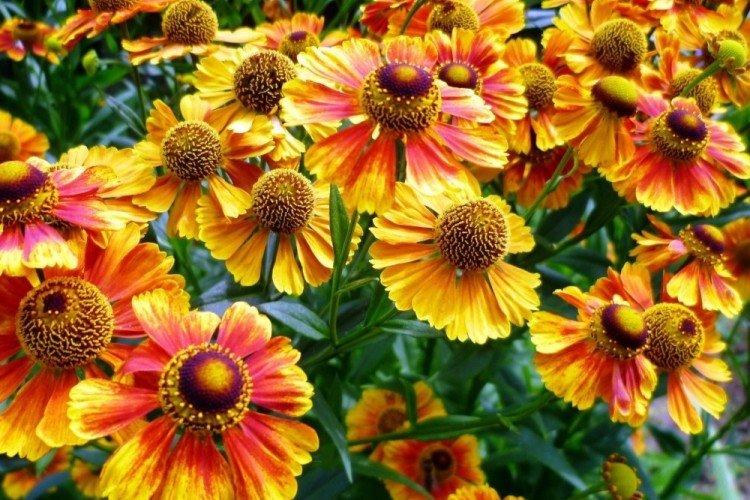
Watering
The plant is difficult to tolerate a lack of moisture, so it needs systematic additional watering. Moreover, the hotter and drier the weather, the more often it needs to be done. Just make sure that the water does not stagnate at the roots.
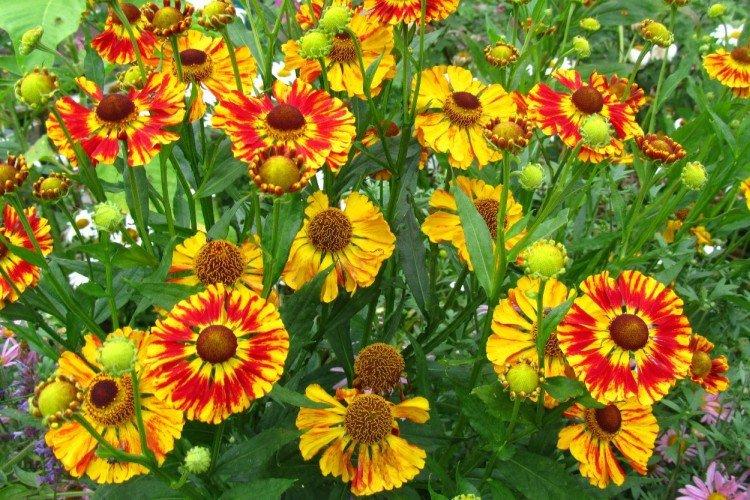
The soil
As with all moisture-loving plants, the soil for helenium should first of all be loose. This is necessary so that the water does not stagnate and the roots do not start to rot. We also recommend mulching the area to maintain temperature and humidity conditions and protect against weeds.
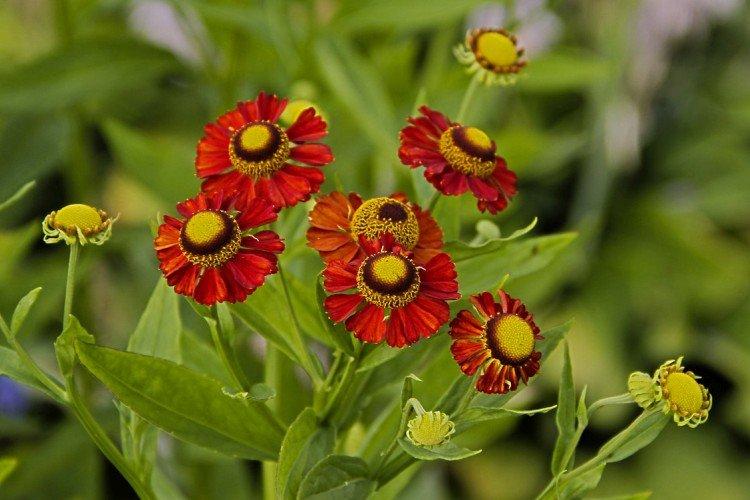
Fertilizers and feeding
Gelenium must be fed three times a season, and you can use both mineral fertilizers and organic matter. The first top dressing is in May, the next one is during active flowering, and the last one is in October. We recommend using liquid fertilizers when watering.
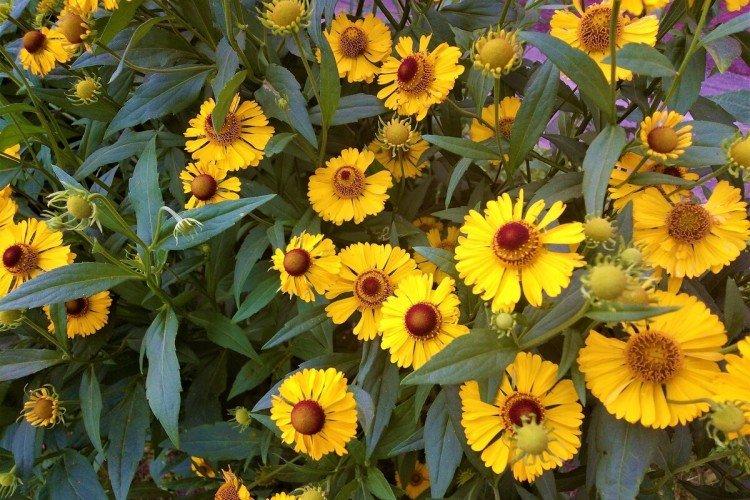
Wintering
In autumn, cut off all the helenium shoots almost to the end, leaving shoots up to 15 cm.Mulch the area around, and cover it with a special non-woven material on top.
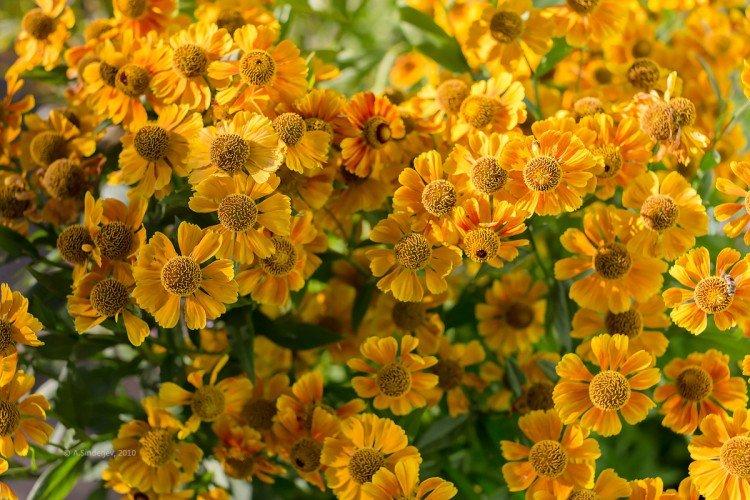
Planting and reproduction of helenium
We do not recommend growing helenium from seeds, because they have poor germination, regardless of the type and freshness of the planting material. It is better to propagate it by cuttings or by dividing the outlet.
Cutting is the fastest and most efficient way.Cuttings take root directly in the ground, but you can first treat the cut with a rooting agent or fertilizers. There should be 30-35 cm between the specimens, because they grow.
In the spring, you can split tall rosettes. Just cut off the cut with its root and shoots with a sharp sterile knife, and immediately plant it separately. It is better not to do this in autumn, because young shoots are likely to die during the winter.
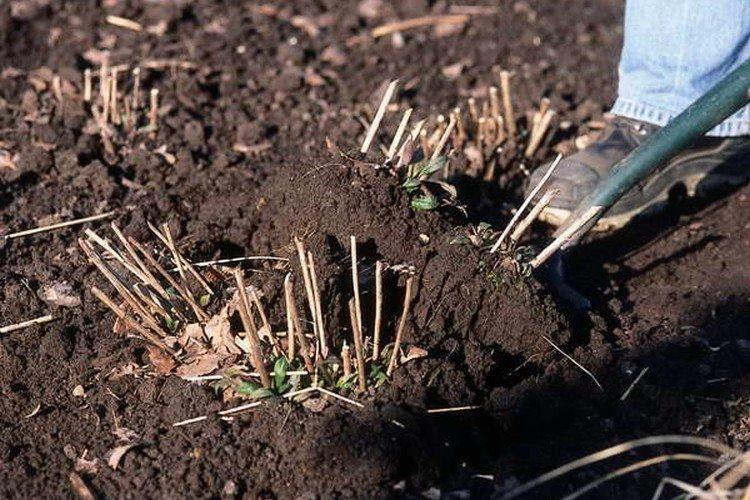
Pest and disease control
Gelenium is resistant to most pests and diseases, especially with proper care and moisture control. But it can suffer from chrysanthemum nematodes, which make their way directly into the tissues of the leaves and buds. All affected shoots must be cut off and burned. For prevention, if nematodes have been in the garden before, add sulfur or lime to the soil.
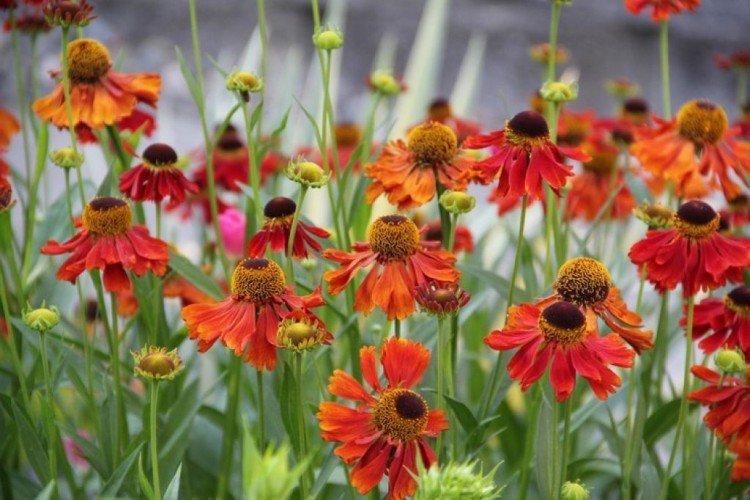
Gelenium - photo
Bright and colorful plantings of gelenium immediately catch all eyes. They look especially impressive against the background of green foliage!
